2023 Mercedes-Benz E-Class: Prices, specs and release date
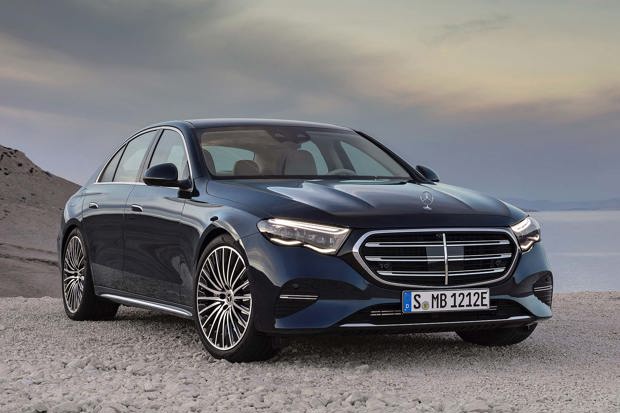
- New Mercedes-Benz E-Class is latest version of a global best-seller
- Premium executive saloon offered with a range of electrified 48V mild hybrid engines
- High-tech new interior brings S-Class features plus built-in TikTok, Angry Birds
- On sale later in 2023 with prices starting from upwards of £50,000
The new Mercedes-Benz E-Class is a sleeker, more sophisticated version of the firm’s long-running premium executive saloon car. Now available in a purely electrified range, the new Mercedes-Benz E-Class saloon arrives in the UK later in 2023, with an estate variant due in 2024.
The new Mercedes-Benz E-Class will provide stern competition to the excellent BMW 5 Series and Audi A6. These three cars have the executive car sector virtually sewn up, although other competitors include the Volvo S90 and Lexus ES.
The new Mercedes-Benz E-Class will not be offered in pure electric guise. The Mercedes-Benz EQE fulfils that role - and provides competition to the Tesla Model S, forthcoming BMW i5 and Genesis G80 Electrified.
2023 Mercedes-Benz E-Class prices and release date
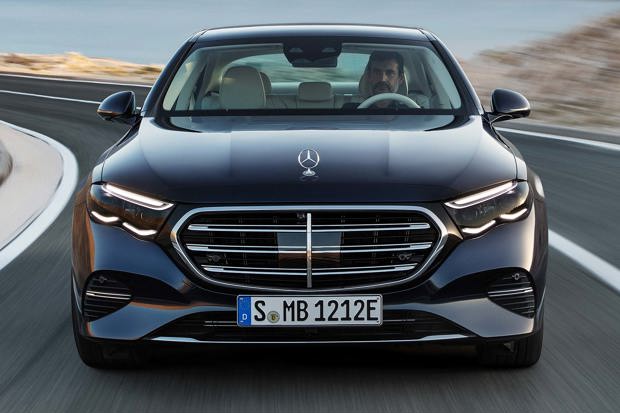
New Mercedes-Benz E-Class prices are likely to mirror today’s model, which starts from around £50,000. The range may have a higher starting point, from around £55,000, if the firm decides to offer the new Mercedes-Benz only in the higher-end AMG Line trims that prove popular in the UK.
The new Mercedes-Benz E-Class will be launched first in saloon guise, rolling out in European showrooms from later this summer. The US follows later in the year, as do additional trim and drivetrain variants, including a new Mercedes-Benz E-Class estate.
2023 Mercedes-Benz E-Class styling, interior and technology
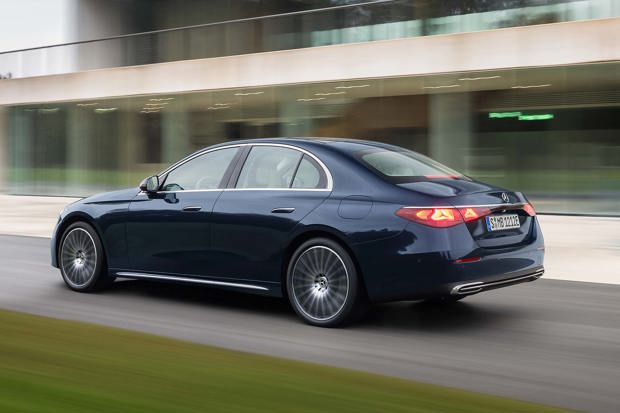
The new Mercedes-Benz E-Class has evolutionary but modern styling. It mimics the premium design touches of the larger Mercedes-Benz S-Class, with standout touches including a large grille and sophisticated LED headlights. At the bottom of each headlight is a dual LED strip, with a thicker LED graphic at the top.
A novel feature for the new Mercedes-Benz E-Class is an illuminated grille. It is lit up by more LED technology.
The new Mercedes-Benz E-Class has a much smoother appearance, with almost minimalist design details, and ultra-tight panel gaps. This helps contribute to a slippery aerodynamic drag factor Cd from 0.23. The new Mercedes-Benz E-Class is a little larger than before, measuring 4949mm long, 1880mm wide and 1468mm tall. A 2961mm wheelbase is 22mm longer than before.
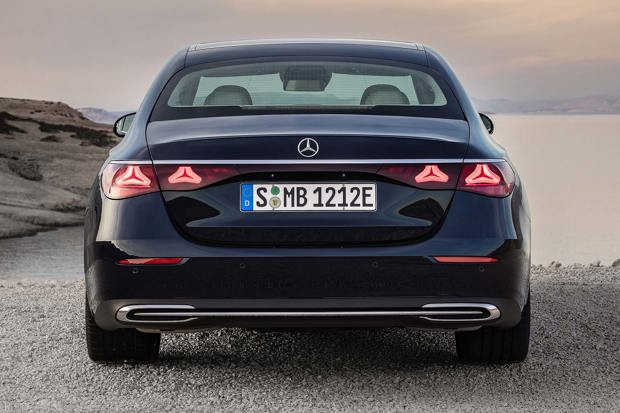
At the rear, the new Mercedes-Benz E-Class has more elegant proportions. Its width is emphasised by classy chrome strips in the bootlid and bumper, which stretch the full width of the car. A smart new design touch are dual star-shaped LED light patterns in the rear lights. The new Mercedes-Benz E-Class will prove very distinctive-looking at night.
The new Mercedes-Benz E-Class has a 540-litre boot in regular petrol and diesel guise. The new Mercedes-Benz plug-in hybrid versions have a 370-litre boot, due to the batteries taking up some space behind the rear seats.
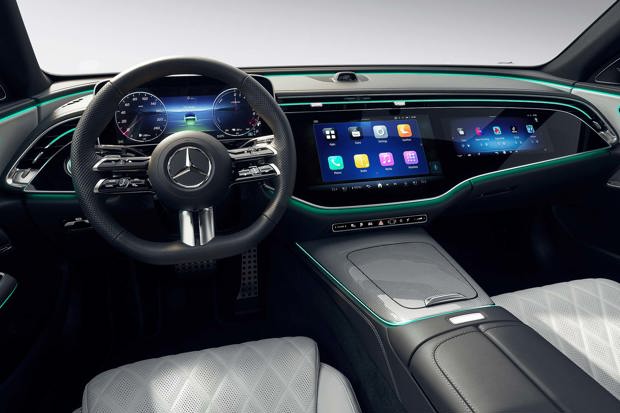
The new Mercedes-Benz E-Class has an entirely new interior electronics architecture, derived from the range-topping Mercedes-Benz S-Class. This allows all-new functions and features including comprehensive music, games and streaming content.
Computing power for the new Mercedes-Benz E-Class has been centralised in a single, very powerful unit. It is more software-driven rather than hardware-driven, so can be updated over-the-air in the future. Mercedes-me connect services are available, as is 5G connectivity.
The new Mercedes-Benz E-Class has Active Ambient Lighting with Sound visualisation. This allows music to be ‘seen’ as well as heard through the ambient light strips throughout the interior. Choose the optional Burmester 4D surround sound system, and music can be ‘felt’ courtesy of sound-resonating transducers.
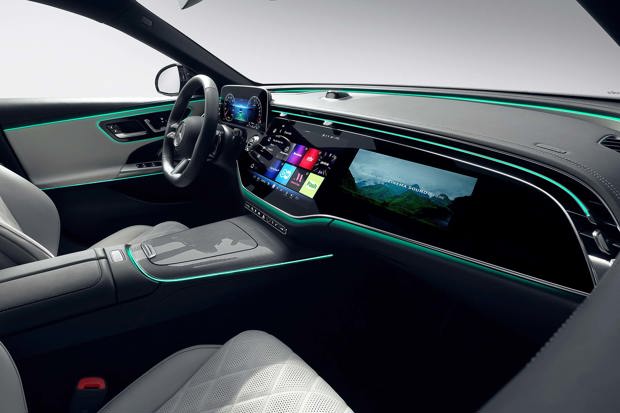
The new Mercedes-Benz E-Class runs the MBUX infotainment system, with central touchscreen and digital driver display. The main icons have been simplified, and are now colour-coded, so they resemble smartphone tiles. This makes them easier to recognise by the driver while on the move.
A series of apps can be downloaded and installed in the new Mercedes-Benz E-Class. These include TikTok, Webex, Zoom, the Vivaldi web browser and comprehensive Zync in-car entertainment portal. Oh, and Angry Birds.
The new Mercedes-Benz E-Class has built-in artificial intelligence (AI) functionality. The car ‘learns’ which comfort systems are used repeatedly, and can, say, turn on the seat heater when the temperature drops below a certain level. Owners can program their own routines, too. Intelligent voice control means owners can activate the voice assistant without using the ‘Hey Mercedes’ keyword.
The new Mercedes-Benz E-Class offers an optional MBUX Superscreen - a large glass surface with an additional front passenger screen. This gives an immersive experience for the front passenger, who can watch TV or video streaming even when the driver is at the wheel - the display is switchable, and automatically shields itself from the driver. Sound from films and apps is enhanced by Dolby Atmos technology.
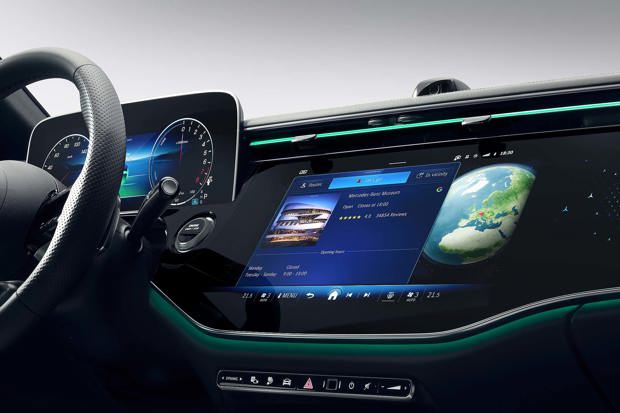
The MBUX Superscreen setup in the new Mercedes-Benz E-Class includes a selfie and video camera on top of the dashboard. This allows the driver, when stationary, to participate in online video conferences via webex. They can also take personal photos and videos.
2023 Mercedes-Benz E-Class engines, performance and fuel economy
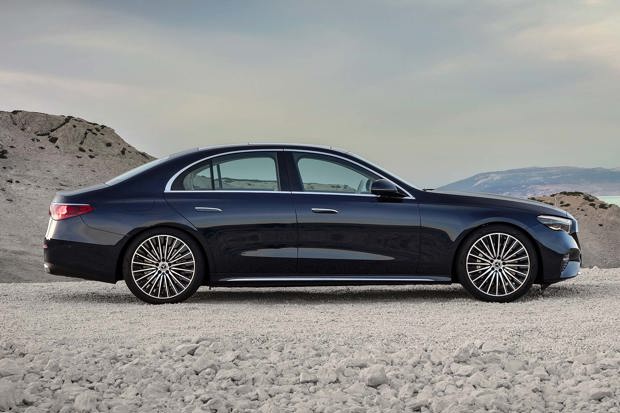
At launch, the new Mercedes-Benz E-Class is offered with a range of petrol, diesel and plug-in hybrid engines. It boasts 50% of the engine line-up is a plug-in hybrid, and as the other engines have mild hybrid tech, it’s a fully-electrified range of motors.
There is, however, no pure electric new Mercedes-Benz E-Class.
The new Mercedes-Benz E 200 petrol is a 2.0-litre four-cylinder turbo that produces 204PS. An electric motor has an additional 23PS of boost. CO2 emissions start from 144g/km, it averages up to 44.1mpg and it does 0-62mph in 7.5 seconds. The E 220 d is a 197PS 2.0-litre turbodiesel capable of up to 58.8mpg, with CO2 emissions from 125g/km.
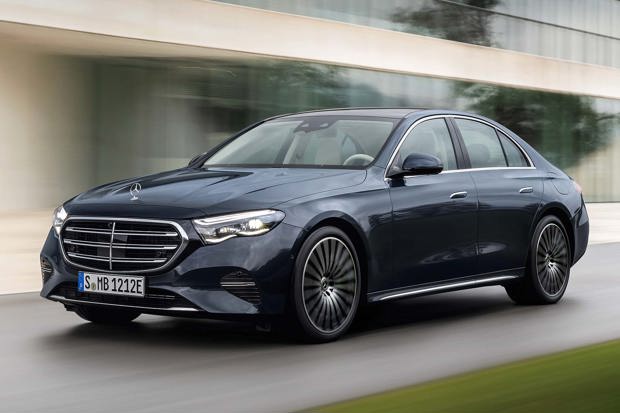
The E 300 e has a 204PS 2.0-litre four-cylinder engine paired with a 129PS electric motor. Total system output is 312PS. It does 0-62mph in 6.4 seconds and emits from just 12g/km CO2. It has a range of 71 miles, courtesy of a 25.4kWh plug-in battery.
An E 400 e 4Matic is even faster, with a 252PS basic engine paired with the same electric motor (system output is 380PS), serving up 0-62mph performance in 5.3 seconds. It too can cover almost 70 miles as an EV.
All new Mercedes-Benz E-Class have a nine-speed automatic transmission. Regular versions are rear-wheel drive with many versions offering 4Matic all-wheel drive.
All future new Mercedes-AMG versions will offer 4Matic. The multi-cylinder high-performance versions will follow later.
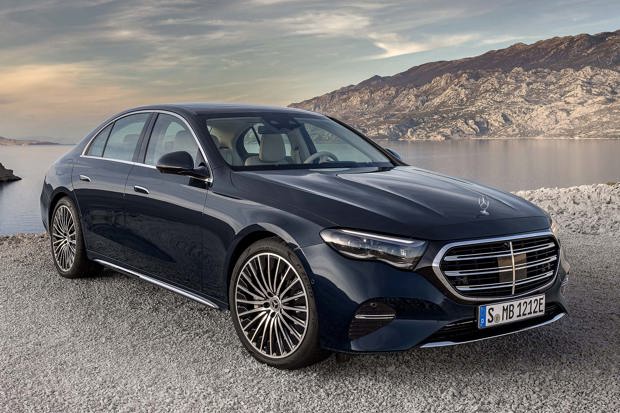
The new Mercedes-Benz E-Class has multi-link suspension. A steel-spring setup is standard, with air suspension optional. It is also available, for the first time, with optional rear-wheel steering. This shortens the turning circle by almost a metre, and will be a boon in cities.
New Cars Coming Soon
Before you step into a showroom, read our in-depth guide to all the new cars coming in the next 12 months and beyond – some are well worth the wait.
How far can the new Mercedes-Benz E-Class plug-in hybrid travel as an EV?
Larger batteries in the new Mercedes-Benz E-Class plug-in hybrid versions give a range of more than 70 miles in pure electric guise.
What apps will you be able to use in the new Mercedes-Benz E-Class?
The new Mercedes-Benz E-Class will allow owners to install apps including TikTok, Zoom, Webex, the Vivaldi browser… and Angry Birds.
Is the new Mercedes-Benz E-Class an important car?
The new Mercedes-Benz E-Class is the latest in a line that’s been built since 1946; More than 17 million have been delivered and the firm considers the Mercedes-Benz E-Class the “heart of the brand”.
I bought a £41k for £35k - am I liable for the premium tax?


